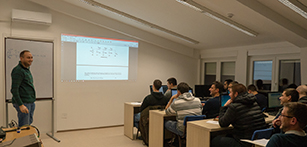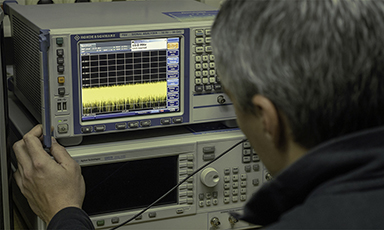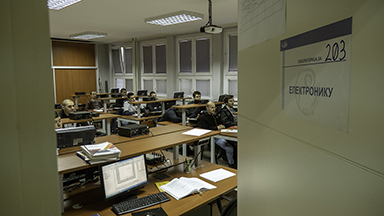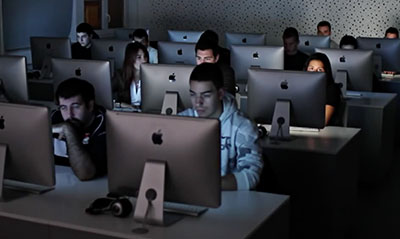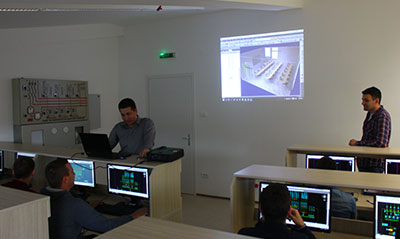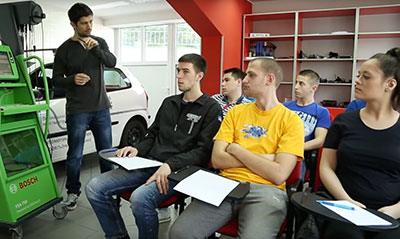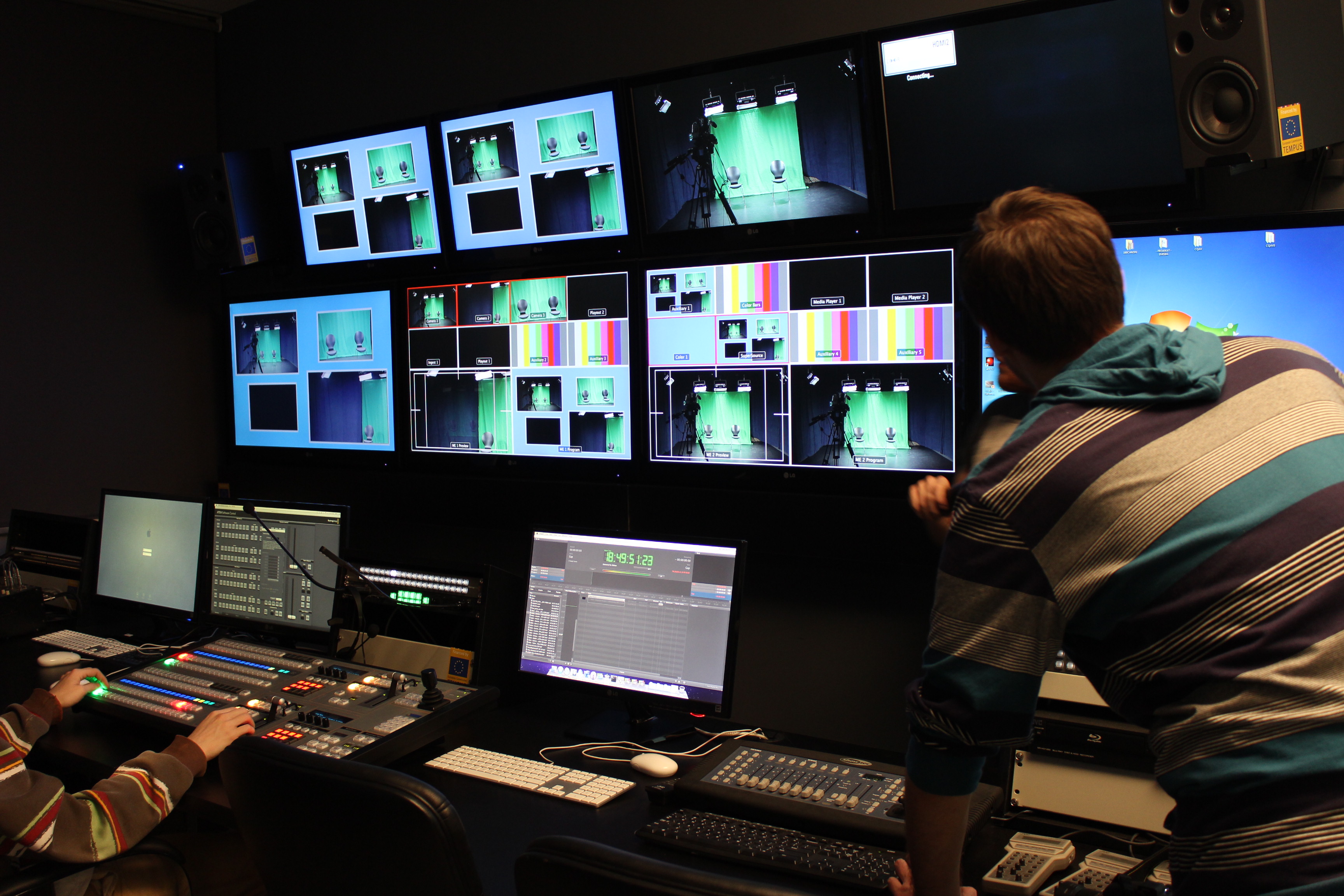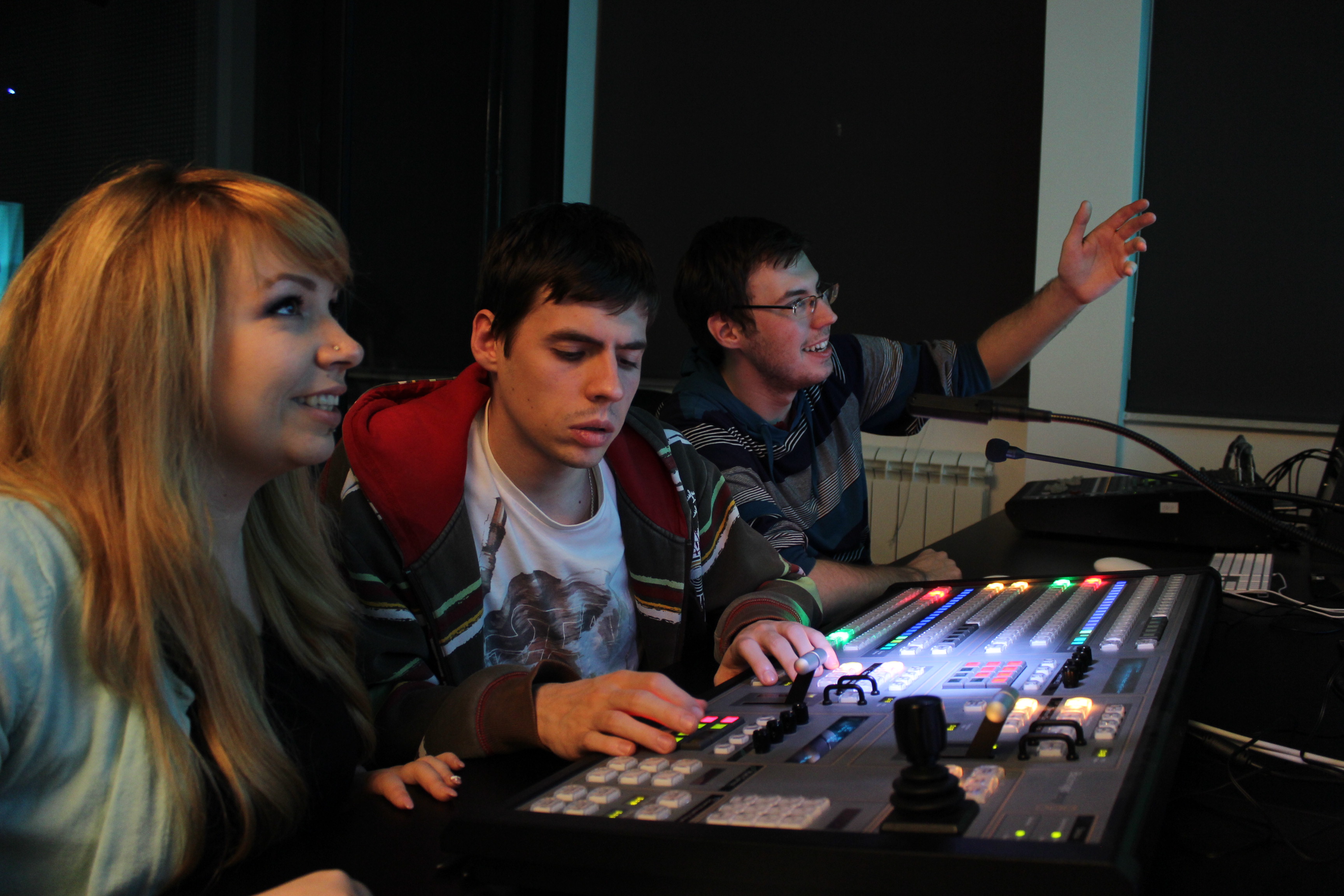
Dokument se učitava
For the needs of School of Electrical and Computer Engineering of Applied Studies, there are seven general purpose computer laboratories, with 20 computers and one general purpose laboratory with 60 computers. Some laboratories also have additional specialized equipment. Laboratories are marked with the numbers of the rooms they are in.
Computer laboratories
LABORATORY 103
20 computers configuration:
LABORATORY 112
21 computers configuration:
LABORATORY 402
21 computers configuration:
LABORATORY 403
21 computers configuration:
LABORATORY 404
20 computers configuration:
LABORATORY 409
20 computers configuration:
LABORATORY 506
21 computers configuration:
LABORATORY 509
20 computers configuration:
LABORATORY 607
60 mini PC configurations + one "classical desktop - professor’s":
Specialized laboratories
AUDIO STUDIO
Audio studio: 5.1 control directing, stereo control directing and studio for sound recording. 5.1 control directing is an exclusive space, which in its appearance, equipment and functionality is a stepping stone in the areas of similar purpose in our environment. It is equipped with 5.1 monitoring system Dynaudio Air 15 which represents an industry standard in the field of film production. In addition to this system, the alternative stereo monitoring Tannoy System 800A is installed. Both systems are connected to the Allen Heath GS-R24m analogue audio microcontroller, which is used for the complete processing of audio signals and as an interface for recording and producing audio materials in combination with Apple Mac Pro computer, which includes the necessary software recording and postproduction (Avid ProTools, Steinberg Cubase, Apple Logic, Presonus StudioOne). In order to achieve better postproduction, 5.1 control directives are made by a multitude of devices for frequency, dynamic and time processing of signals (dbx, Lexicon, TC Electronic, Tegeler, TL Audio, etc.). Stereo control audio directing is equipped with Digidesign ProTools HD3 system which includes 3 audio processing cards located in Apple Mac Pro computer, Avid HD I / O 16-channel audio interface and Digidesign C24 controller.
The recording studio is equipped with a studio set of high quality microphones and well-known manufacturers such as Neumann, AKG, Sennheiser, Shure, AudioTechnica. All spaces are connected to a single functional unit by signalling installations, thus achieving great flexibility in the functioning of the studio. Audio studio can be used for the realization of demanding projects: recording music albums, sounding films, animations, video works, etc.
MULTIMEDIA COMPUTER LABORATORY (room 310)
Multimedia Computer Laboratory is an acoustically-processed space equipped with: iMac computers of the new generation, video and audio production software, and FullHD projector. The laboratory is connected with the other audio and video laboratories of study program Audio and Video Technologies. The application of the aforementioned equipment enables teaching by using the most modern hardware and software tools and provides educators with the ability to apply the most advanced methods in education in the field of multimedia and enable students to educate using modern tools in the field of image and audio processing and synthesise the specified areas, which is necessary precondition for work in the field of multimedia.
ANIMATION STUDIO
The animation studio is equipped with luminous tables for classical animation, while for computer animation and image processing Multimedia Computer Laboratory is equipped with the latest Autodesk Maya software as well as the Adobe package.
MULTIMEDIA DIGITAL HD TV STUDIO
The multimedia digital HD TV studio consists of several rooms connected to a single functional unit like the real modern television, such as control directing, recording studio, press desk, make-up room and machine room. The control directing consists of a large monitor wall to monitor all the video signals coming through the modern video mixer BlackMagic ATEM2 as well as the accompanying computers for managing the video system and the reproduction / recording of audio and video content. The recording studio is equipped with JVC FullHD cameras perfectly adapted for work in the studio (remote control, signalling, communication with direction, etc.). It is also equipped with a wide range of lighting fixtures (halogen, fluorescent, LED). Since the TV studio is connected to installations with 5.1 control audio control, it is often used for more demanding audio recording.
LABORATORY FOR AUTOMATION (room 102)
The Laboratory for Automation is intended for carrying out exercises in subjects related to automation and automation control systems, and acquiring practical and applicable knowledge in these fields. Exercises in this laboratory enable students to acquire extensive knowledge of sensors and actuators in automation and provide the basis for further learning on automation control systems, as well as practical knowledge in the application of the PLC (Programmable Logic Controller) controller and "SCADA" (Supervisory Control And Data Acquisition System) in modern automation and monitoring systems. The laboratory consists of five PLC controllers "FATEK" and "OMRON" and 10 PLC controllers "SIEMENS" with switchboards and various additional modules such as analogue-digital converters, temperature measurement modules (together with a complete simulator operation of the dryer), module for communication with the controller via mobile network and SIM card, frequency regulators (together with the compressed motor control apparatus), etc. In addition to PLC devices in the laboratory there are 11 National Instruments acquisition cards with additional modules for temperature measurement and control, mass measurement and pneumatic control.
With each of these controllers there is one computer through which the controller programmer is executed. Exercises are planned to work independently, on the controllers themselves, with the supervision of the subject associates and demonstrators. In addition to these controllers, which are intended for the preparation of laboratory exercises, the laboratory also features an apparatus that simulates the operation of bottling, PLC controller by brand "SCHNEIDER", etc. which are part of the diploma papers of older students and which can be used for further upgrading and improvement (as a topic of some new diploma works). After completion of the exercises in this laboratory, students will have practical knowledge in designing and realization of automation control and monitoring systems in industry.
10 computers configuration:
10 computers configuration:
LABORATORIES FOR VEHICLES
Laboratories for vehicles are located on the schoolyard allowing direct access to vehicles. The laboratories are spatially organized and equipped to form an environment that fully corresponds to workplaces in the field of testing, maintenance and repair of motor vehicles. All devices used support the ability to display the contents of the screen using the projector, which facilitates implementation and increases the quality of instruction when working with large groups of students.
LABORATORY FOR VEHICLES 1 (LV-1)
The Laboratory for Vehicles 1 is a place where laboratory exercises and trainings are conducted with devices for measuring and diagnosing malfunctions on electronic systems and devices in vehicles. The laboratory has the following equipment:
For the purposes of laboratory exercises, testing and development in laboratories, the following vehicles are also used:
LABORATORY FOR VEHICLES 2 (LV-2)
After the reconstruction and expansion, the Vehicle Laboratory 2 has been transformed into a full-face service area with the following equipment:
Measurements on school vehicles are also carried out using a variety of tools: cylinder sealant, pressure gauge pressure gauges for diesel and gasoline engines, pressure gauges in low-pressure fuel installations, testing devices and adjustment of mechanical injectors of diesel engines. In addition, laboratories for vehicles 1 and 2 are equipped with all necessary mechanical and electrical equipment, as well as measuring tools and instruments. Pointer exercises and measurements are performed on several demonstration engines on mobile platforms, automatic and manual gearboxes, electric locomotives, alternators, motorcycles, as well as other mechanical, electrical and electronic circuits.
LABORATORY FOR ELECTRONICS AND TELECOMMUNICATIONS (room 203)
A modern laboratory, equipped for practical training of students in the subjects of applied studies belonging to the field of electronics and telecommunications. The laboratory has ten desks. Each desk is provided for two students. At the specialized desks, the necessary installation for supplying the equipment, as well as for connection to the computer network, was performed. The room of the Laboratory for Electronics is equipped with air conditioning, projector and board. At each desk there are necessary laboratory instruments (digital oscilloscope, signal generator, universal base for modelling electronic circuits) and a computer connected to Intranet VETSNET.
A special position is intended for students who have chosen one of the subjects in the field of electronics for their diploma work.
Equipment specification:
For the needs of doing final works, the development of modular modules for the needs of laboratory maintenance and the maintenance of specialized laboratory exercises, laboratories also have specialized laboratory instruments and equipment:
LABORATORY FOR MEASUREMENT AND AUDIO ELECTRONICS (room 204)
Modern laboratory, equipped for practical training of students in the subjects of applied studies belonging to the field of measurement in electronics and telecommunications, as well as audio electronics. The laboratory has ten desks. Each desk is provided for two students. At the specialized desks, the necessary installation for supplying the equipment, as well as for connection to the computer network, was performed. The room of the Laboratory for Electronics is equipped with air conditioning, projector and board. At each desk there are necessary laboratory instruments (oscilloscope, signal generator, universal base for modelling electronic circuits) and a computer connected to Intranet VETSNET.
Laboratory instruments and accessories:
MULTIPLE MODULAR LABORATORY (room 209)
Modern laboratory, equipped for practical training of students in the subjects of applied studies belonging to the field of electrical engineering and electronics, as well as computer areas. The laboratory has ten desks. Each desk is provided for two students. At the specialized desks, the necessary installation for supplying the equipment, as well as for connection to the computer network, was performed. The laboratory room is equipped with air conditioning, a projector, a board and a device for storing equipment that is not currently in use. At each desk there are necessary laboratory instruments (oscilloscope, signal generator, multimeter, universal base for modelling electronic circuits) and a computer connected to Intranet VETSNET. Depending on the purpose during the semester, each desk can have one or two computers.
Laboratory instruments and accessories:
LABORATORY FOR ELECTRICAL INSTALLATIONS AND LIGHTING (room 602)
The Laboratory for Electrical Installation and Lighting is located on the sixth floor of the School. The laboratory has a capacity of 20 seats equipped with 20 PCs configuration:
The laboratory is equipped with a laboratory set with 4 light sources of different technologies and a cabinet to compensate for their reactive power and measure electrical luminaries. Within the laboratory there is also an aluminium ramp with a width of 7 meters and a height of 3 meters with a backlit LED RGB illumination controlled via an Android application.
Ramps have installed modern devices for stage lighting: ·
The equipment is connected to the computer for controlling and programming wirelessly via DMX protocol, and interconnect using XLR-connected cables. During laboratory exercises students can be directly acquainted with the appearance, construction and principles of operation of various low-voltage equipment used in electrical installations (switches, relays, contactors, terminals, conductors ...).
LABORATORY FOR RENEWABLE ENERGY SOURCES (room 603)
The Laboratory for Renewable Energy Sources is located on the sixth floor. The Laboratory has 18 computers of the following configuration:
The laboratory contains its own MPPT technology and charging regulator, two rechargeable batteries, a solar simulator, an inverter, a frequency regulator and an asynchronous 370W power motor. Within the laboratory, there is also a cleaner trainer, which besides the specialized control software contains the following elements: two photovoltaic panels of 1.2W amorphous silicon, 1.2W wind turbine generator, two hydrogen power generators of 1.16W, 1W fuel cell pack, lux meter and anemometer. By performing laboratory exercises, students are enabled to record current-voltage characteristics and power characteristics of the photovoltaic panel, views of the empty walk and short circuit of the wind turbine, as well as a view of the wind generator's work in the system with accumulator batteries with a graphic representation of the power characteristics and current characteristics. Also, students are enabled to generate hydrogen with different hydrogen volumes, using fuel cells as fuel, which then produces electricity for powering consumers at their exit. With the help of cleaner training equipment, students are also given the opportunity to simulate a hybrid system with different forms and ways of converting energy.
LABORATORY FOR ELECTRICAL MACHINES AND CONVERTERS (room 604)
Laboratory for electrical machines and converters is located on the sixth floor of the school, in the vicinity of other energetics laboratories. It is equipped with 10 workplaces, designed for two students.
Computer Configuration is:
Working positions have computers, test facilities, proper power supply, as the necessary measuring and protection equipment. In addition, there are also three separate jobs, designed for testing electrical machines (synchronous generators, asynchronous motors, DC motors and transformers). During laboratory exercises related to electrical machines and drives, students are studying the empty walk and short circuit of electrical machines, controlling the speed of electric motors, as well as the asymmetrical load of the synchronous generator. Laboratory exercises related to electrical power converters are performed in two stages. In the first part, students in the appropriate simulator represent the models to be tested. During the second part of the exercise, students perform measurements on appropriate models (phase regulators, rectifiers, inverters, choppers), whose results are compared with calculated values and values obtained during the simulation.
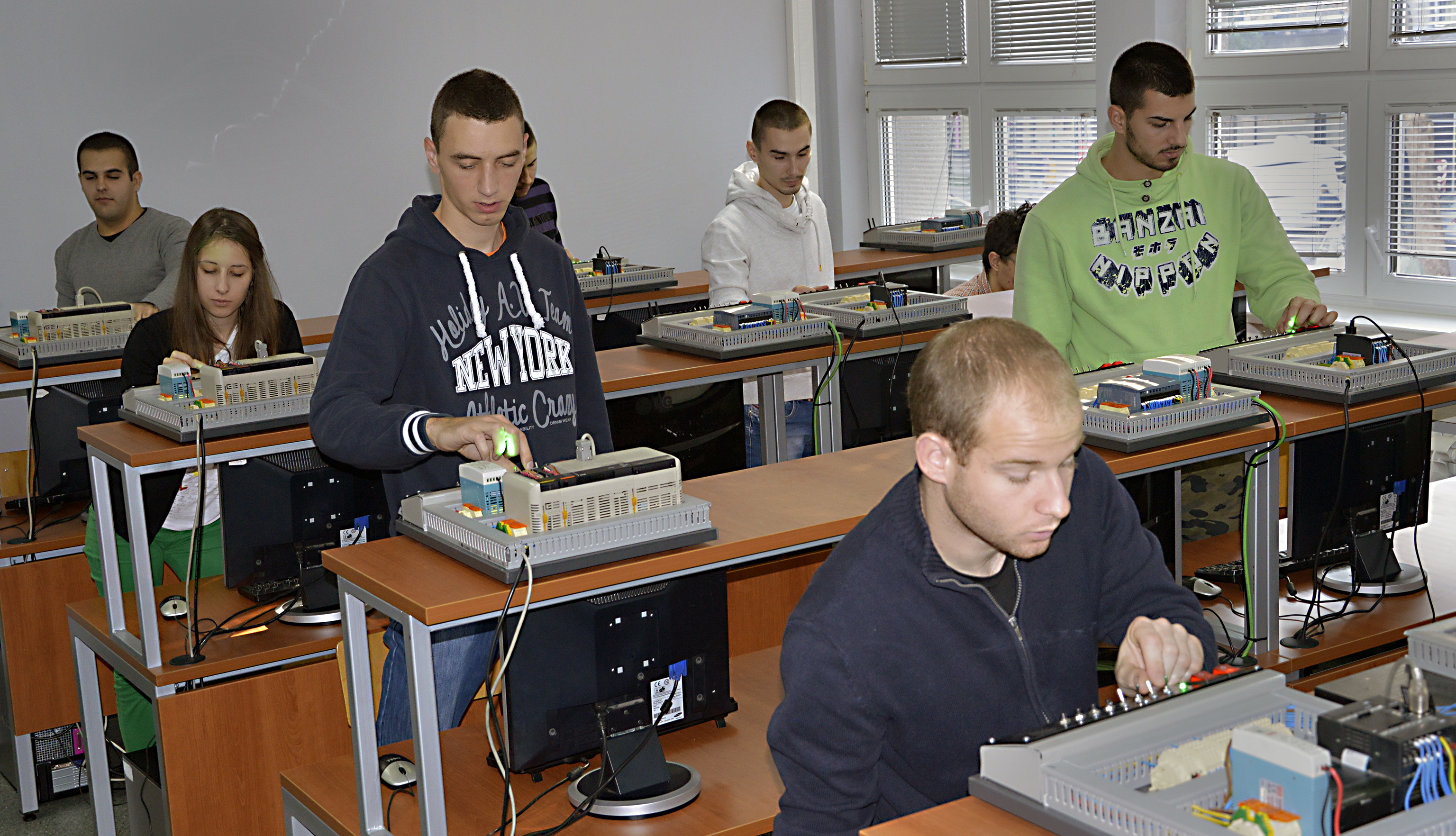
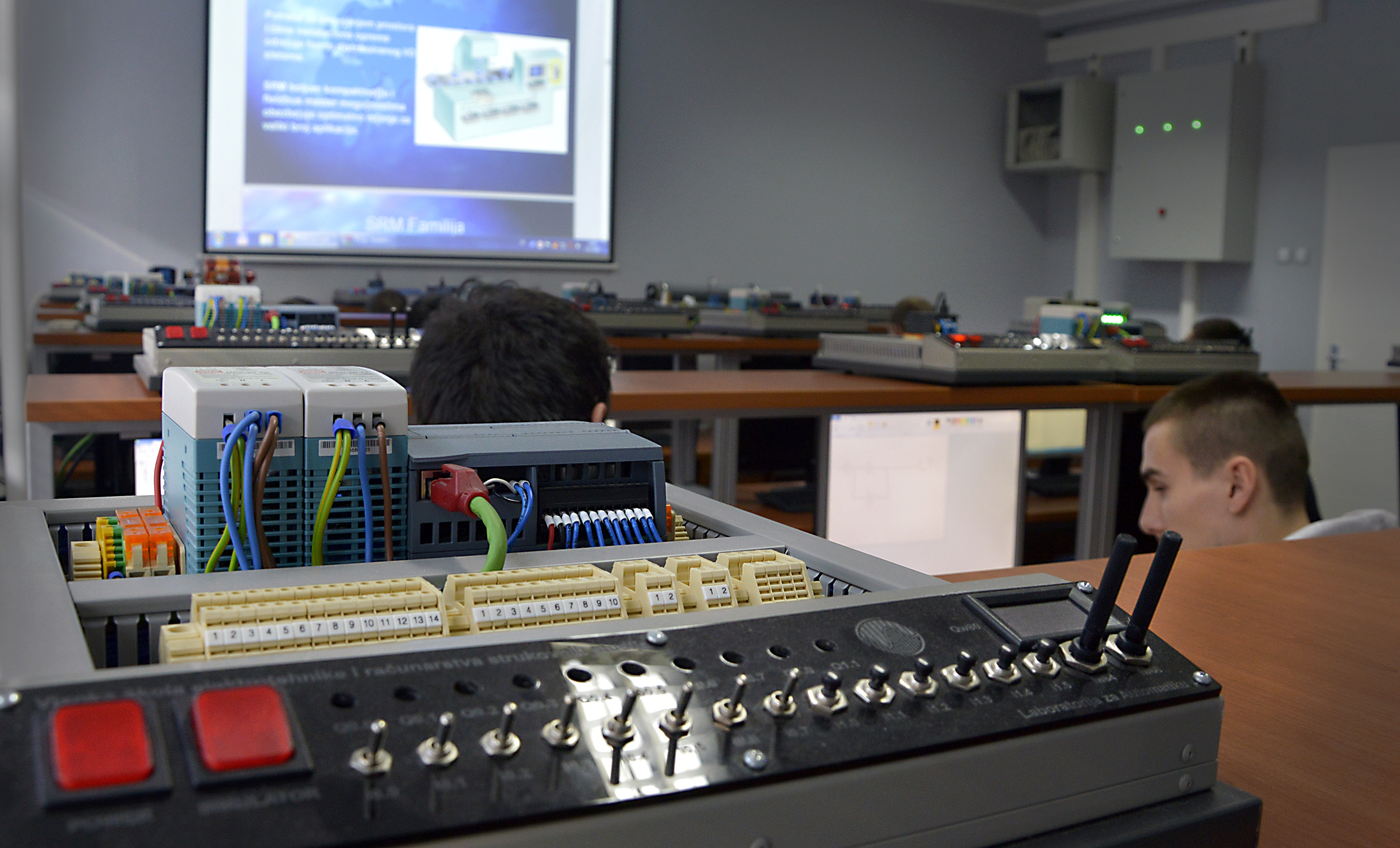
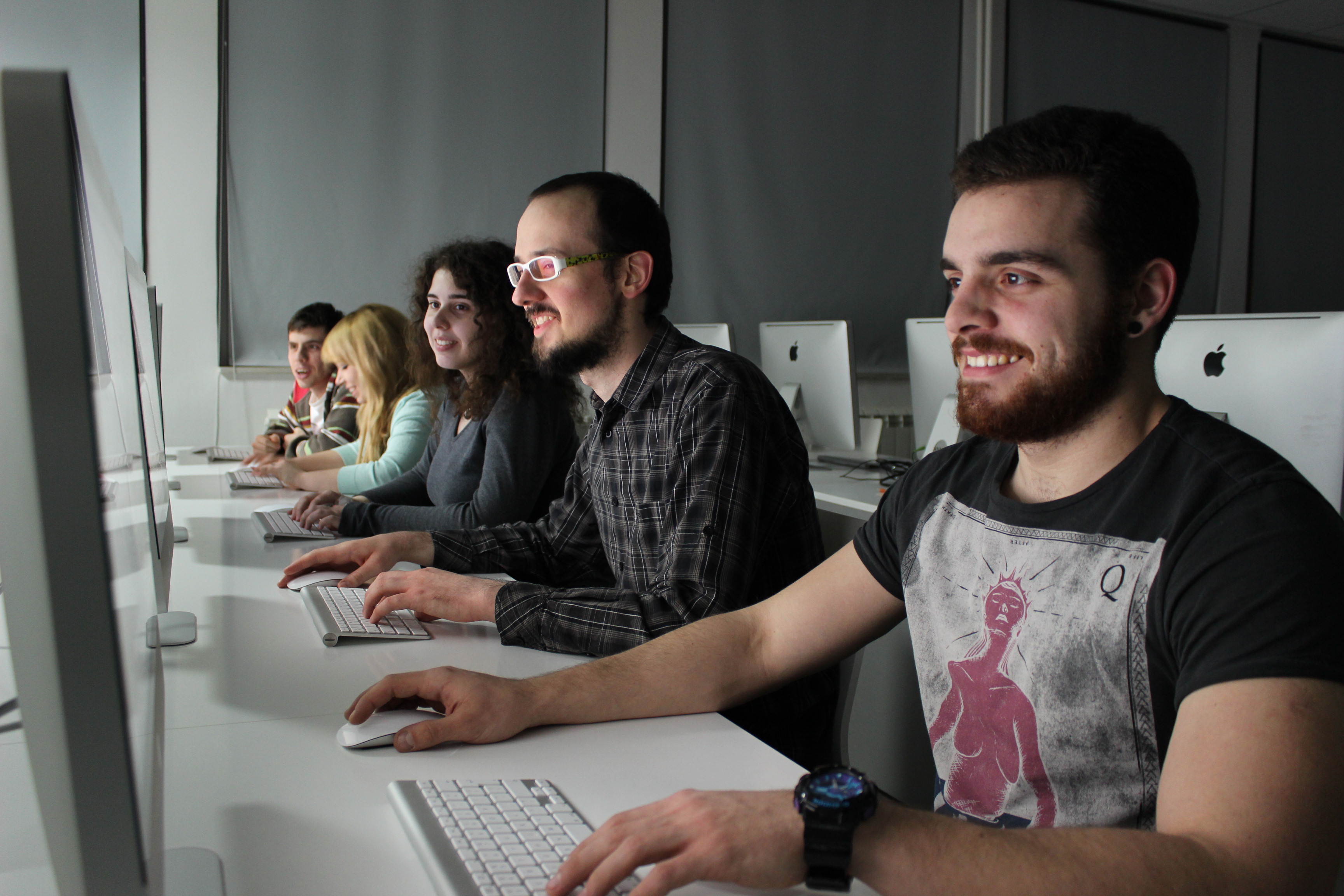
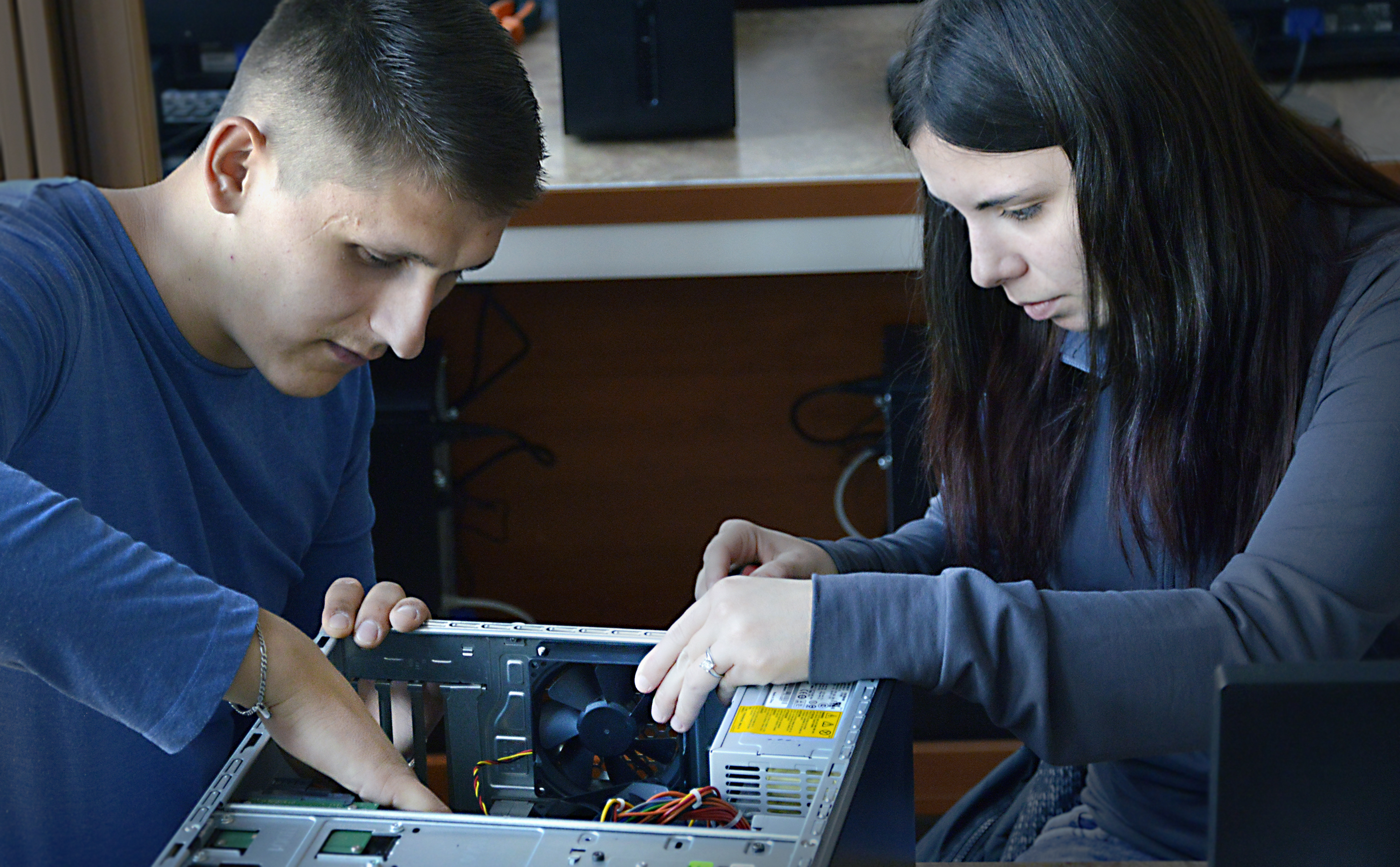
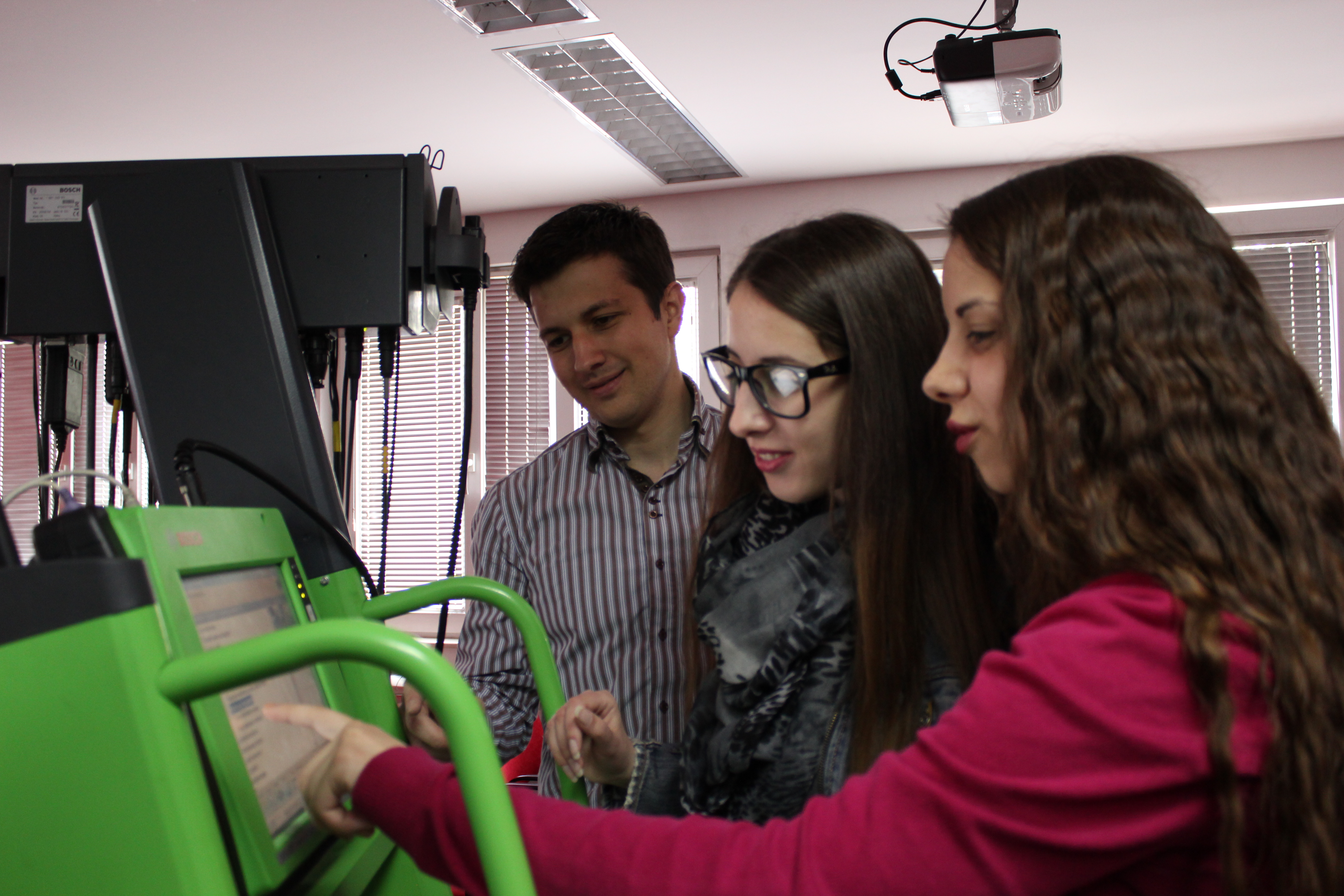
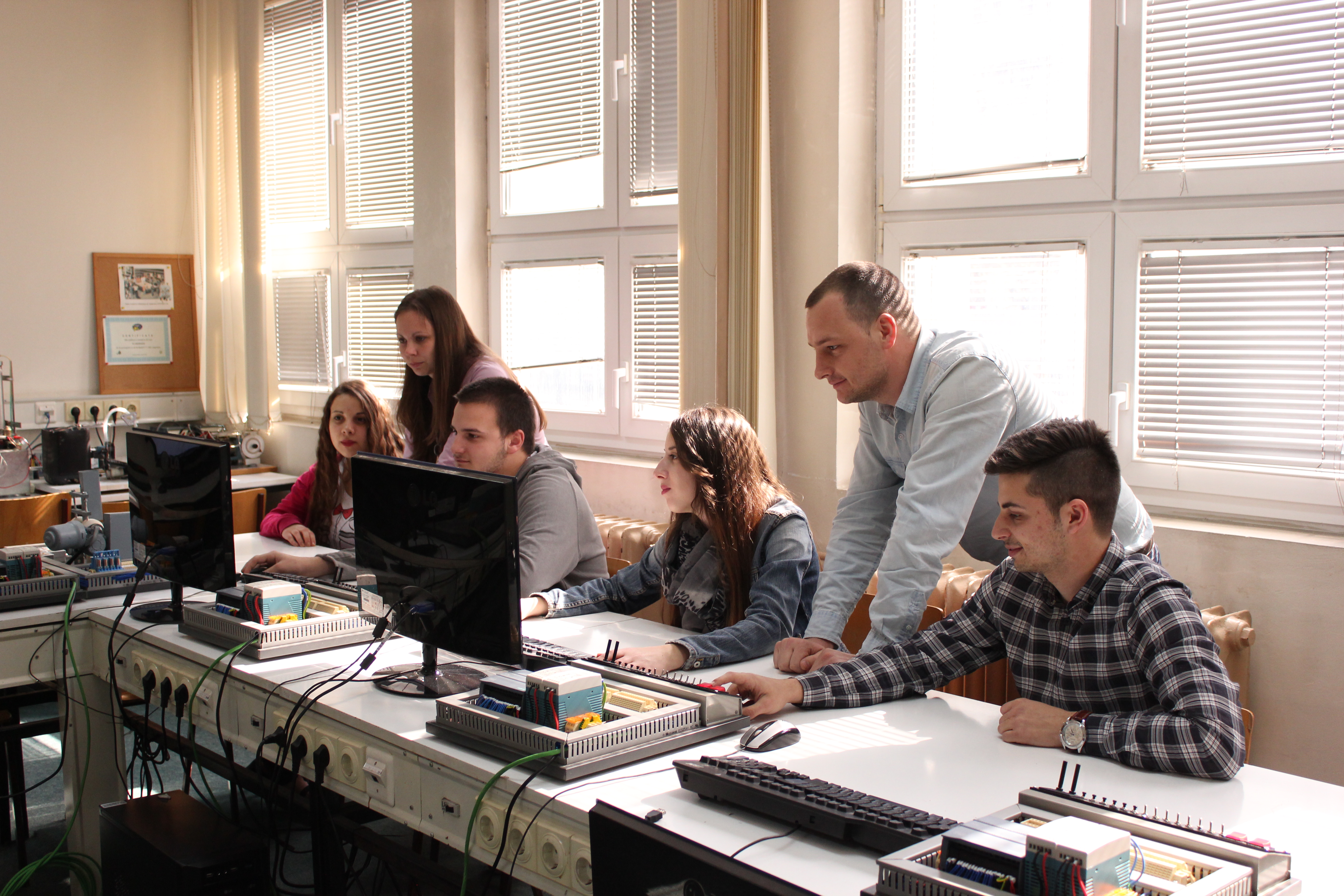
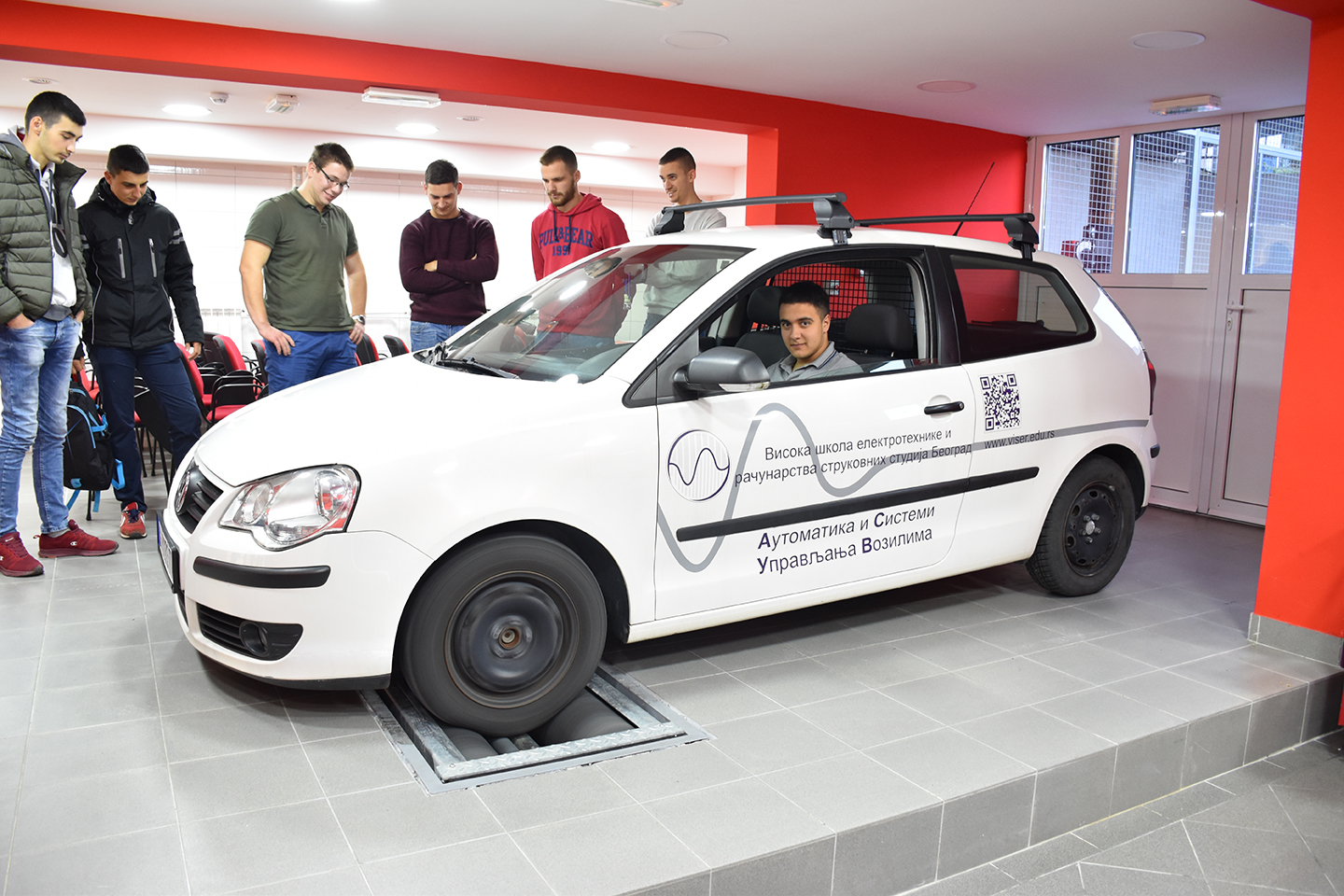
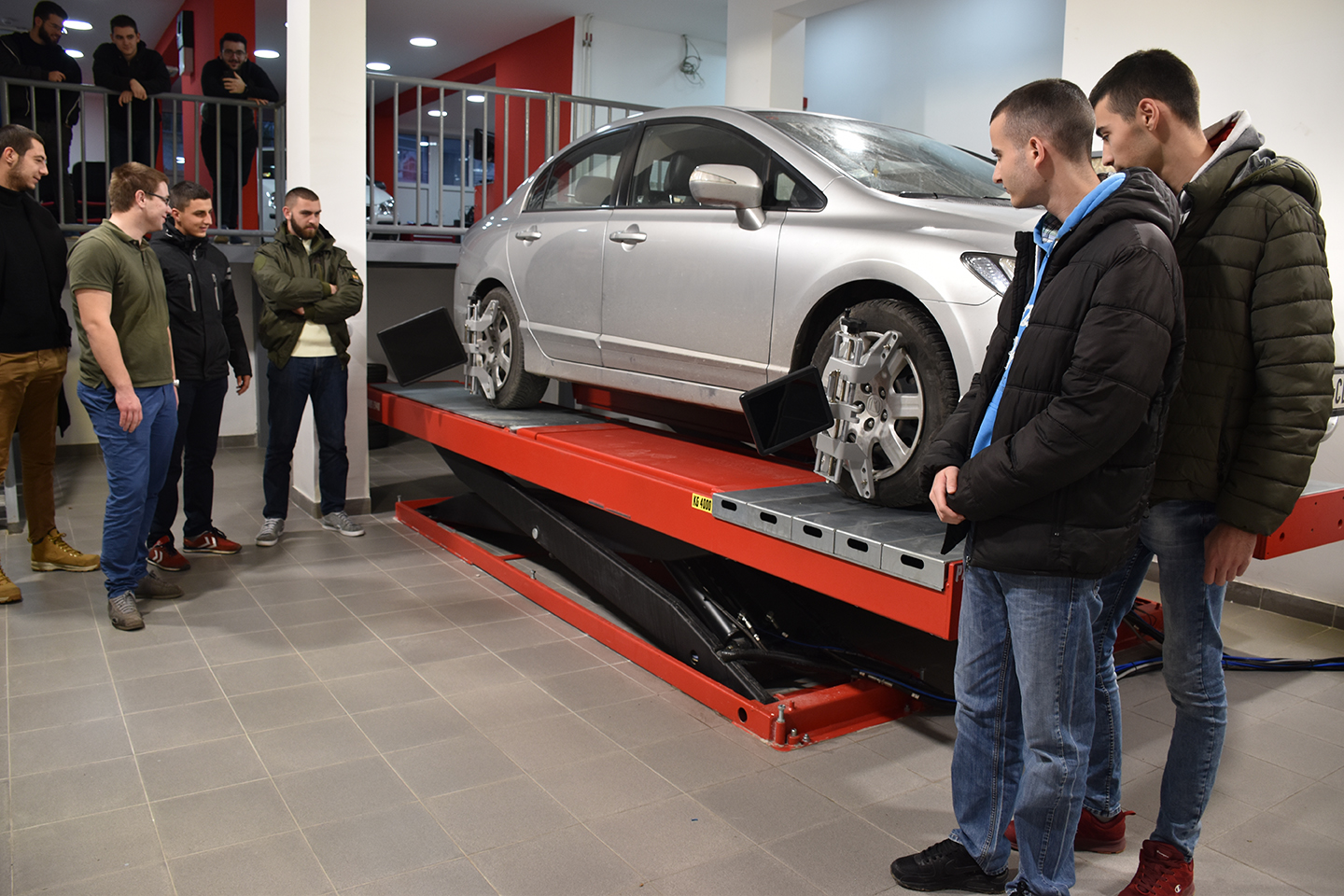
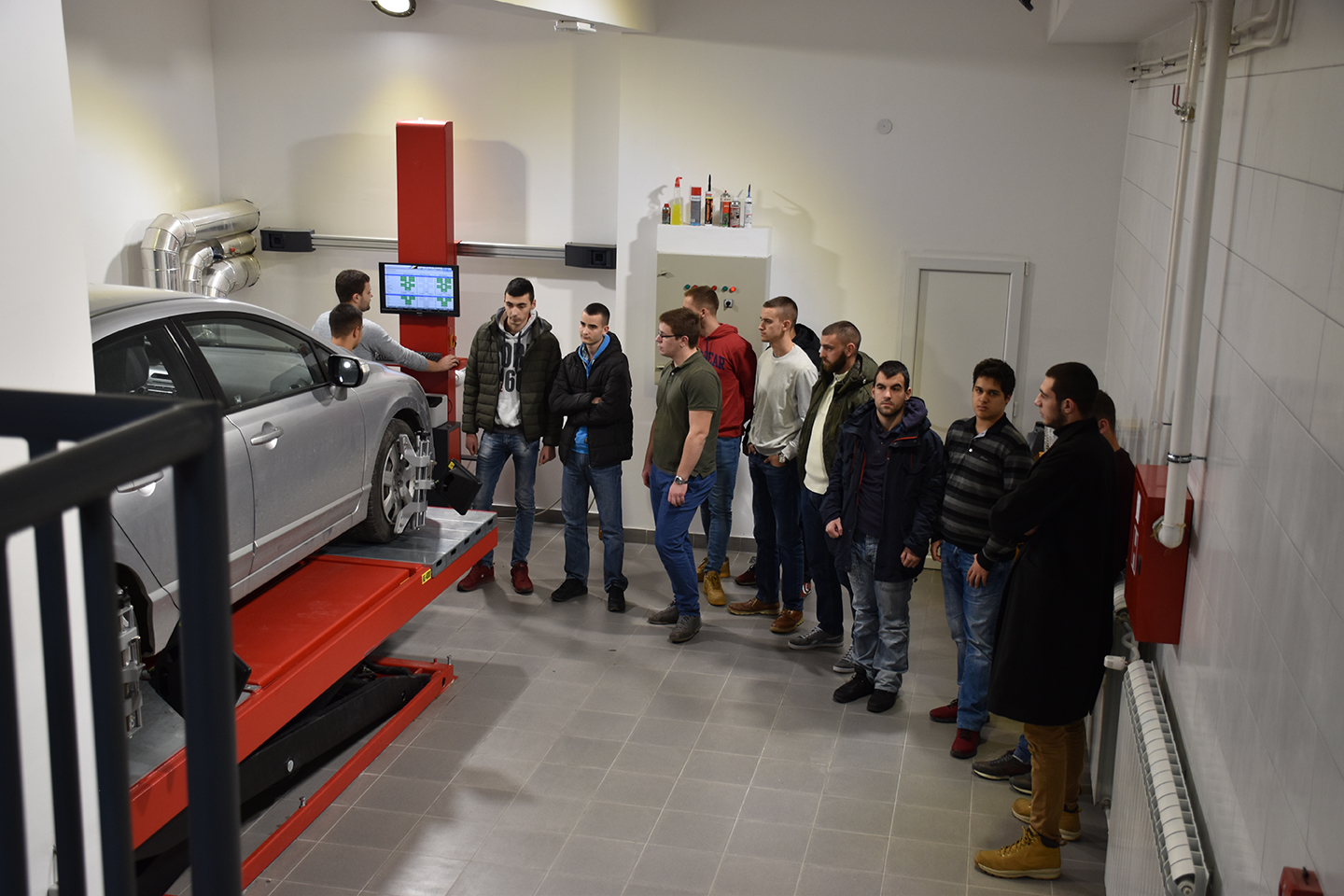
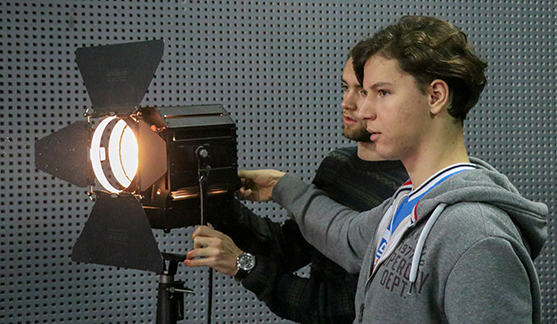
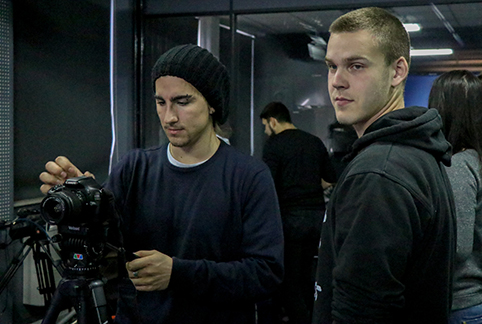
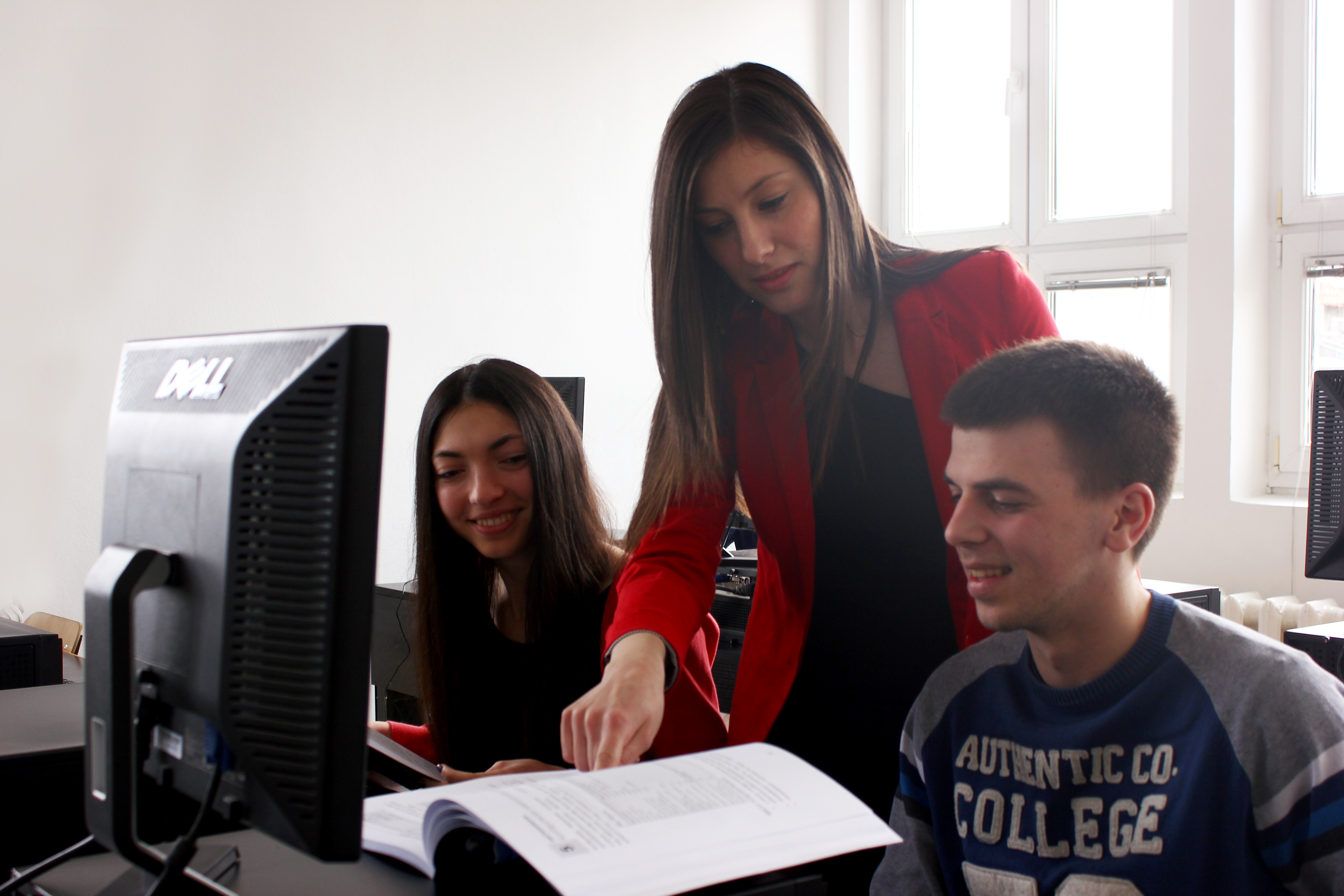
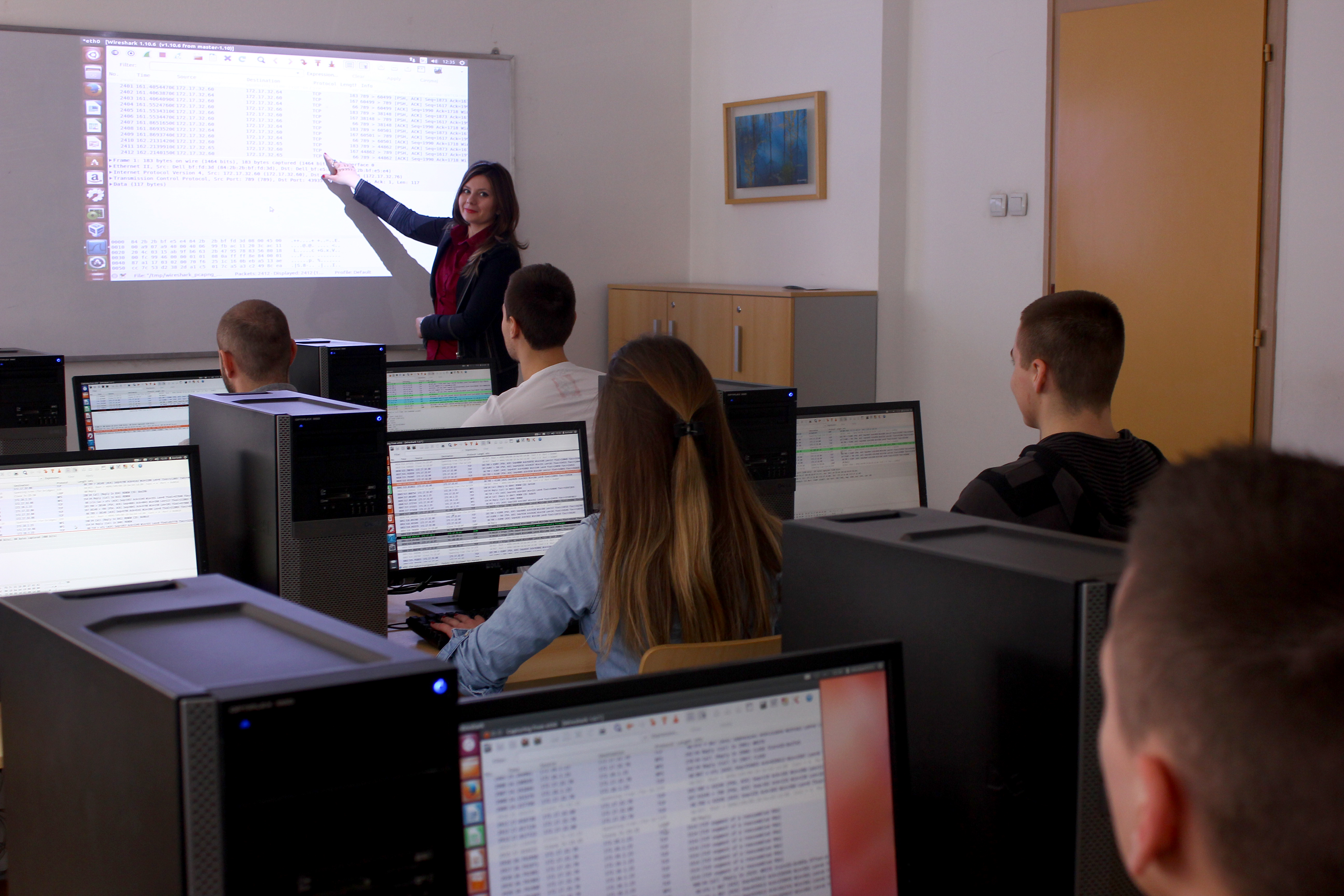
.jpg)
.jpg)
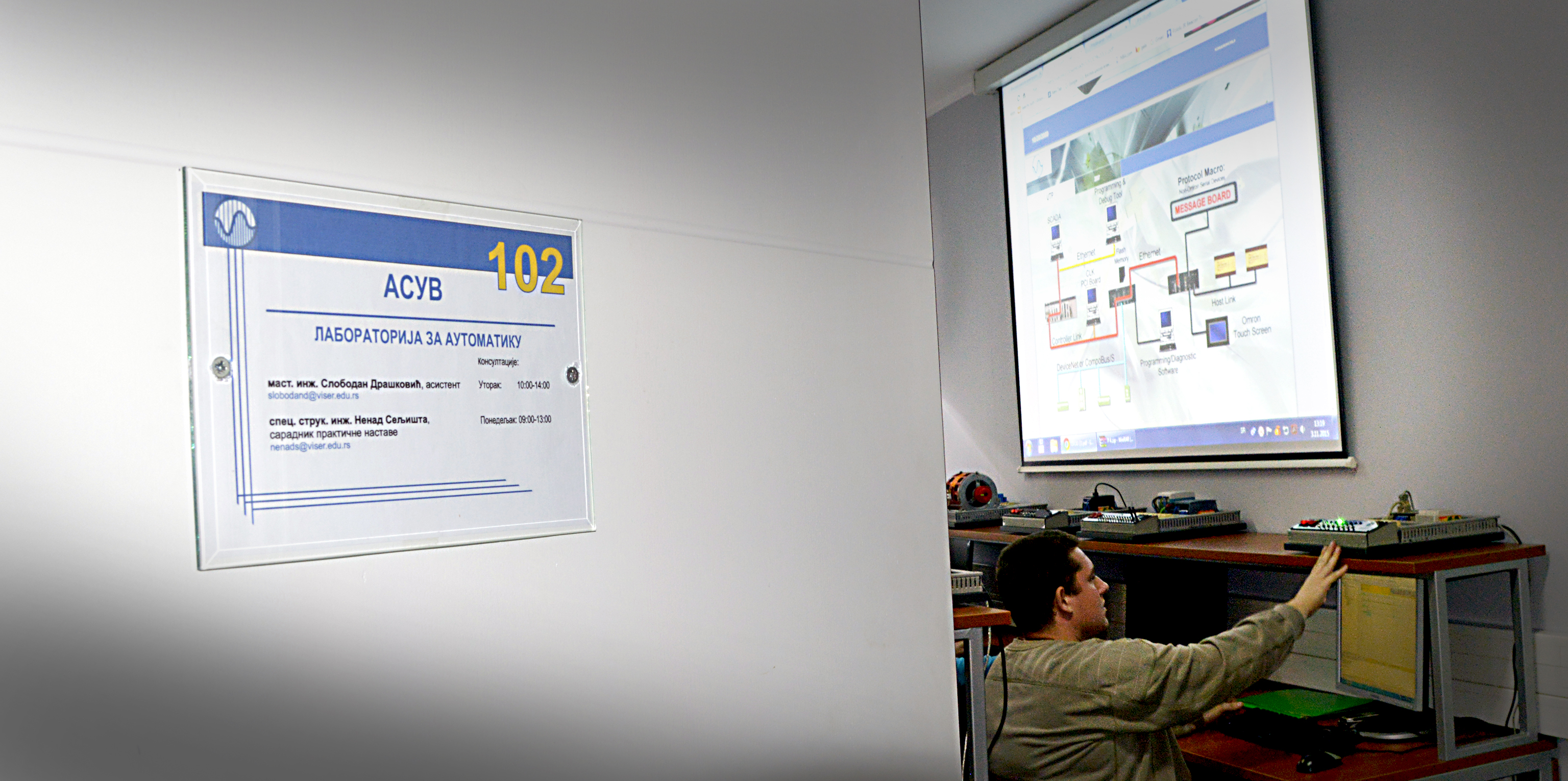
.jpg)
.jpg)
.jpg)
.jpg)
.jpg)
.jpg)
.jpg)
.jpg)
.jpg)
